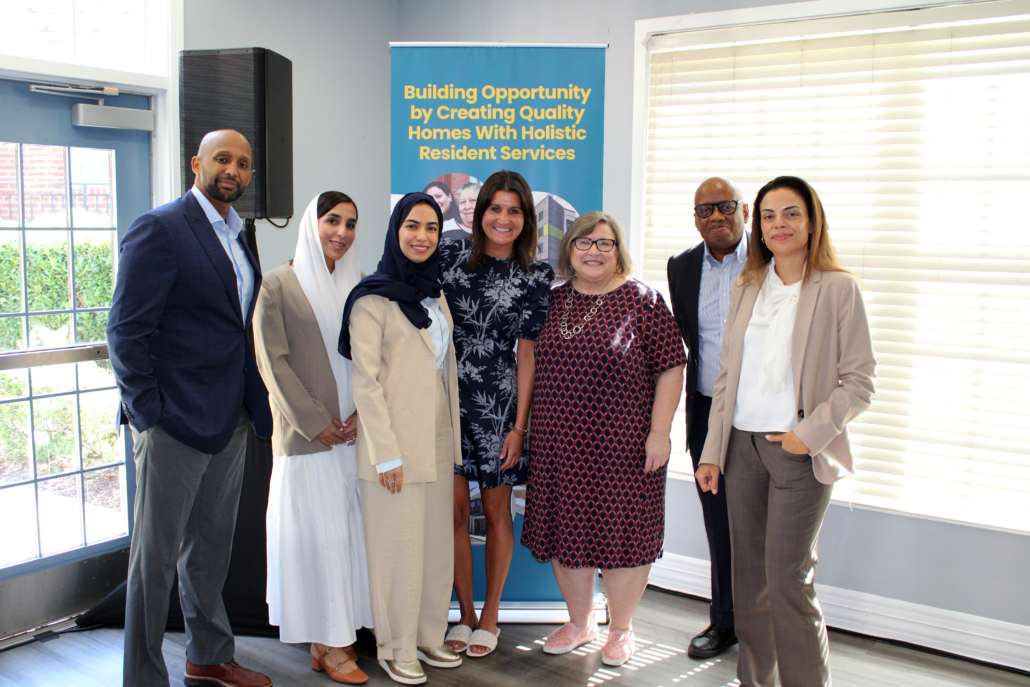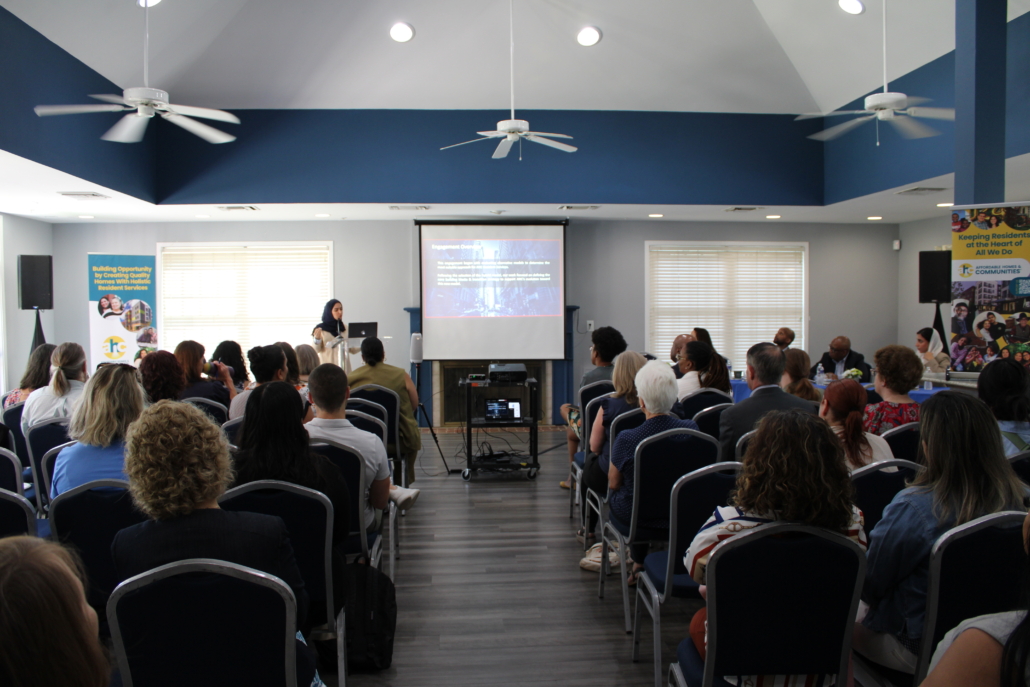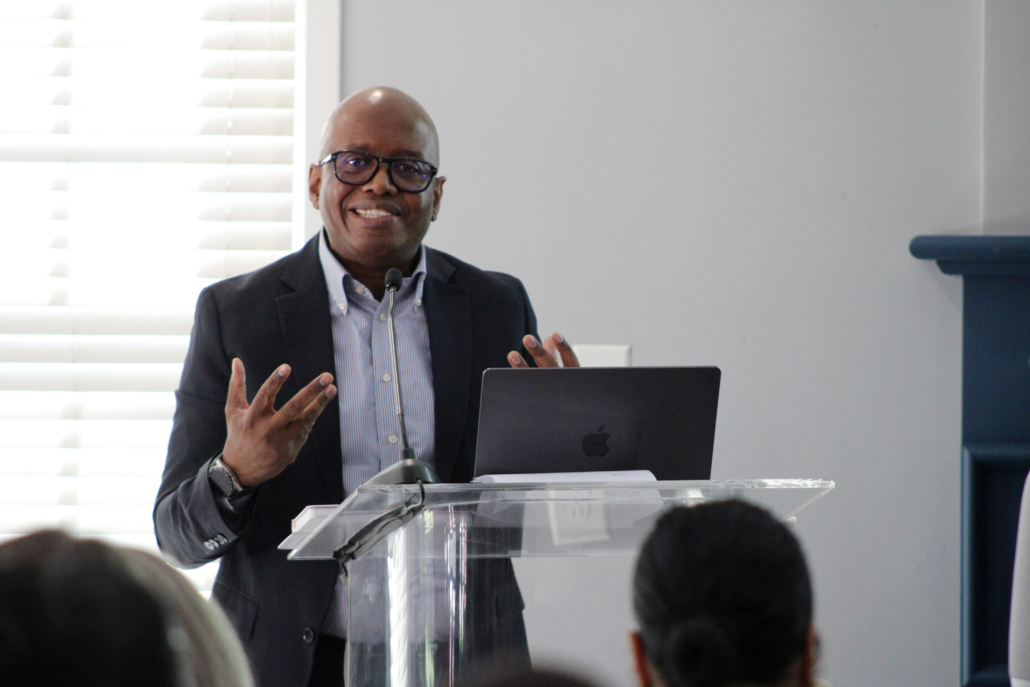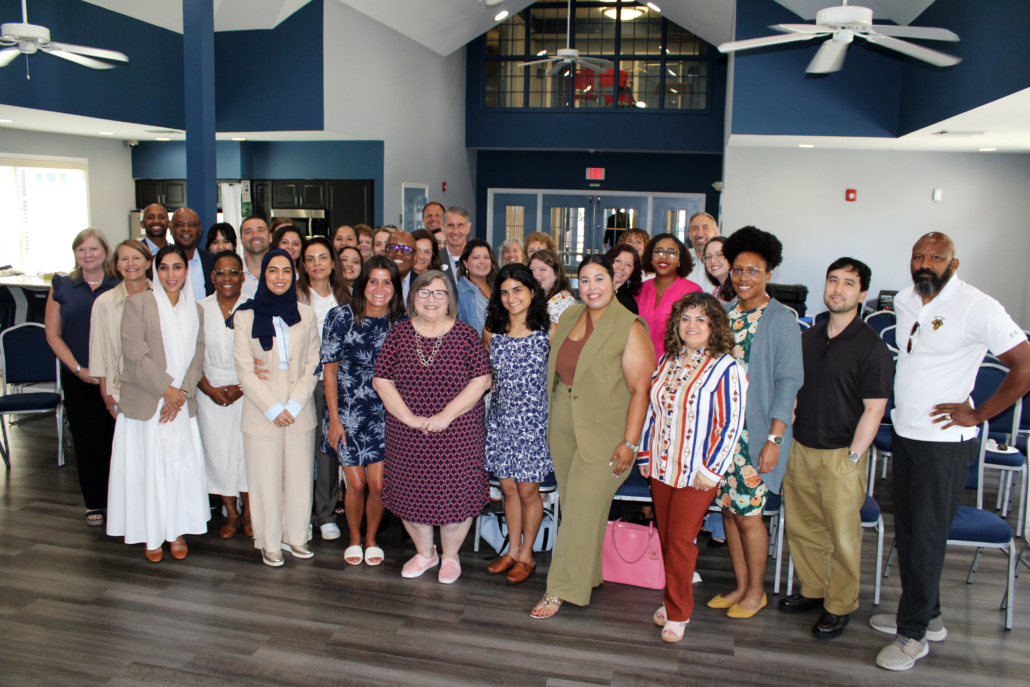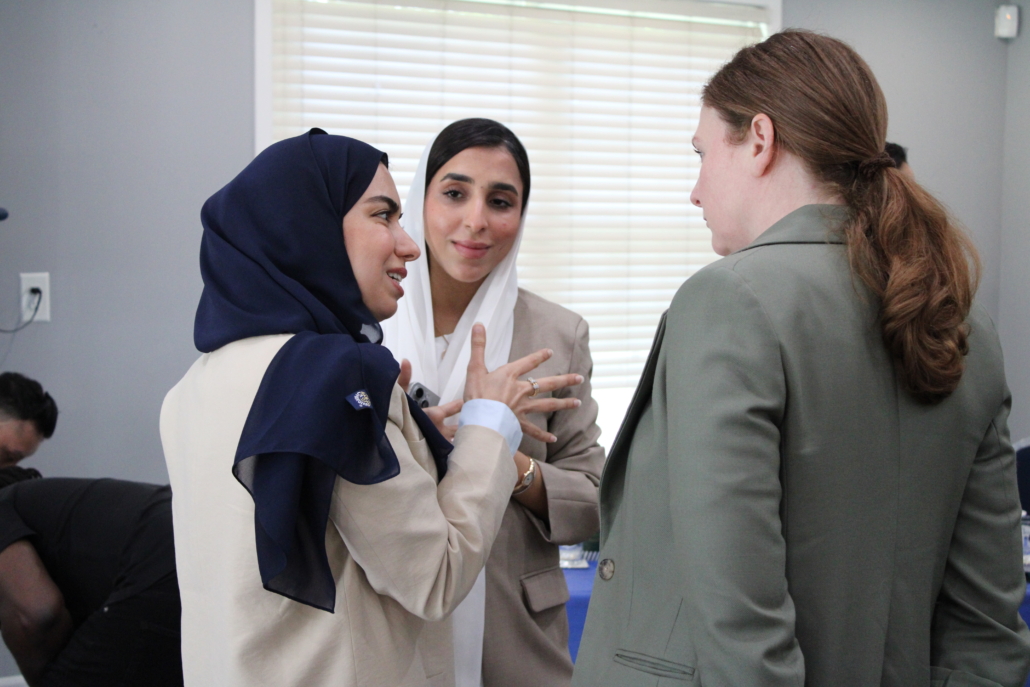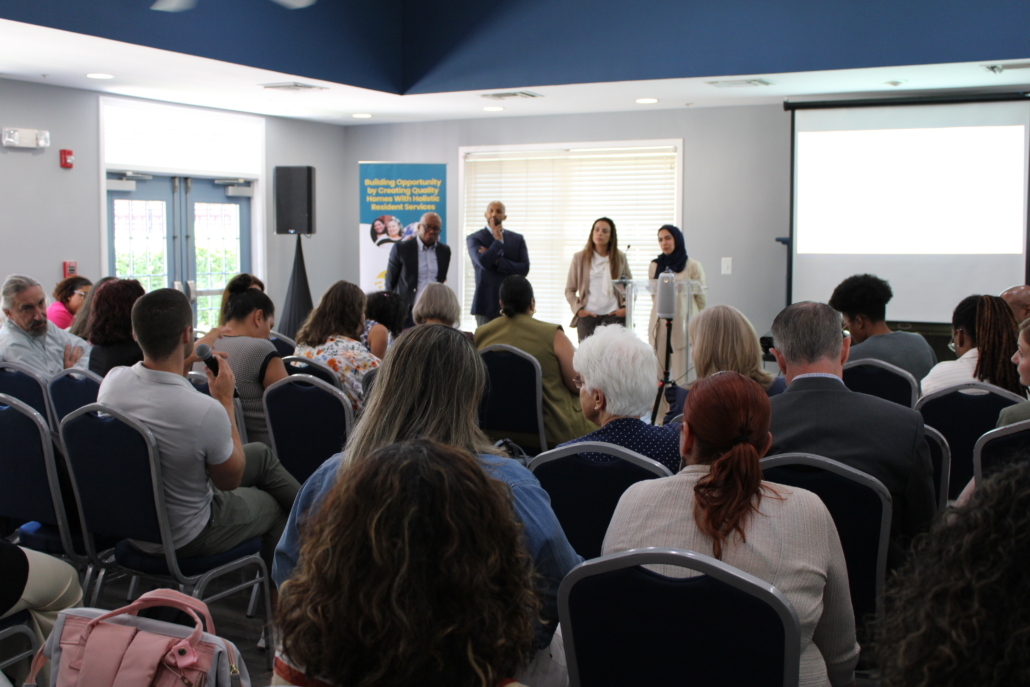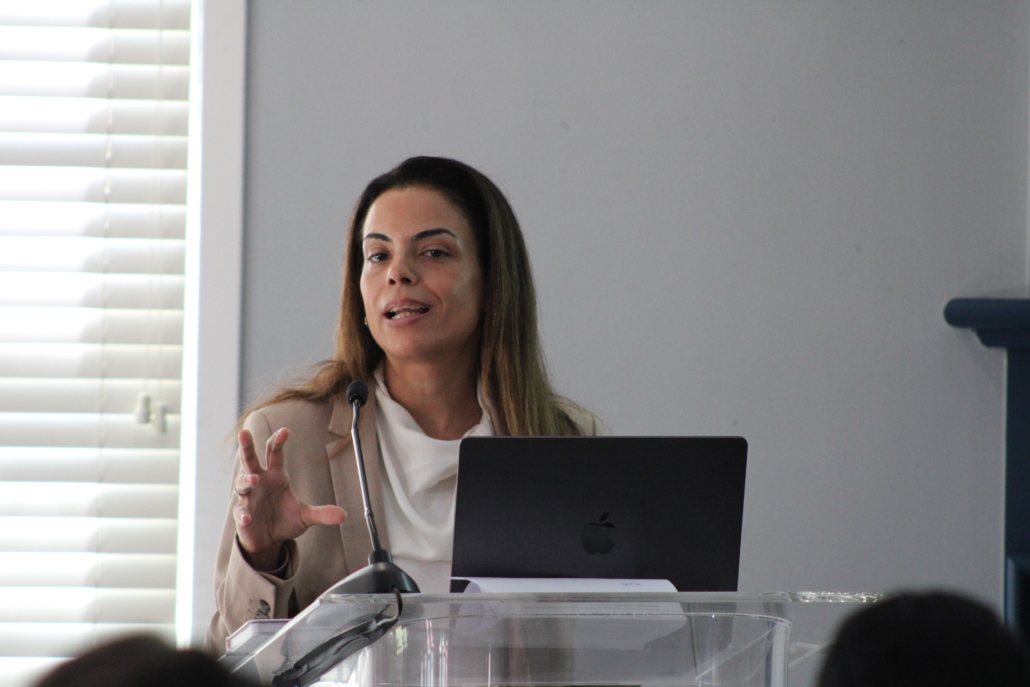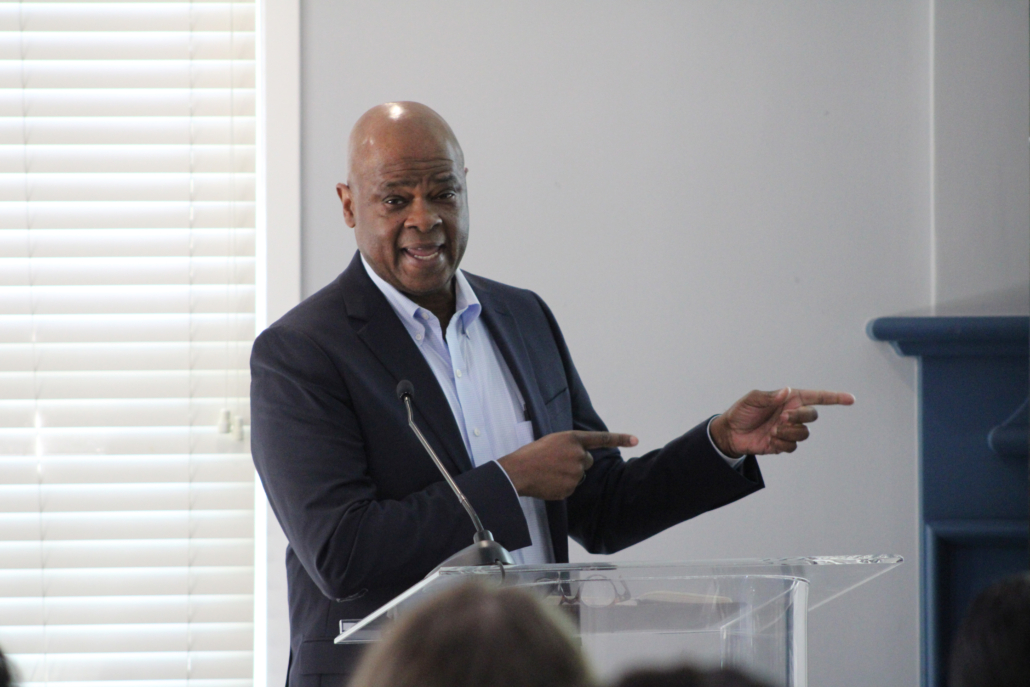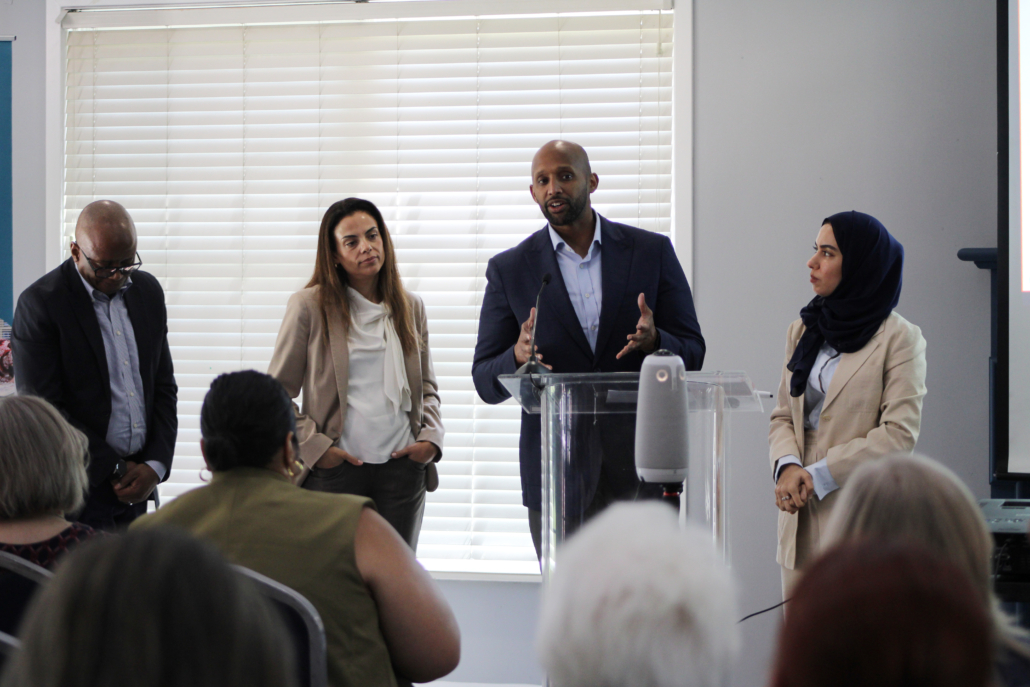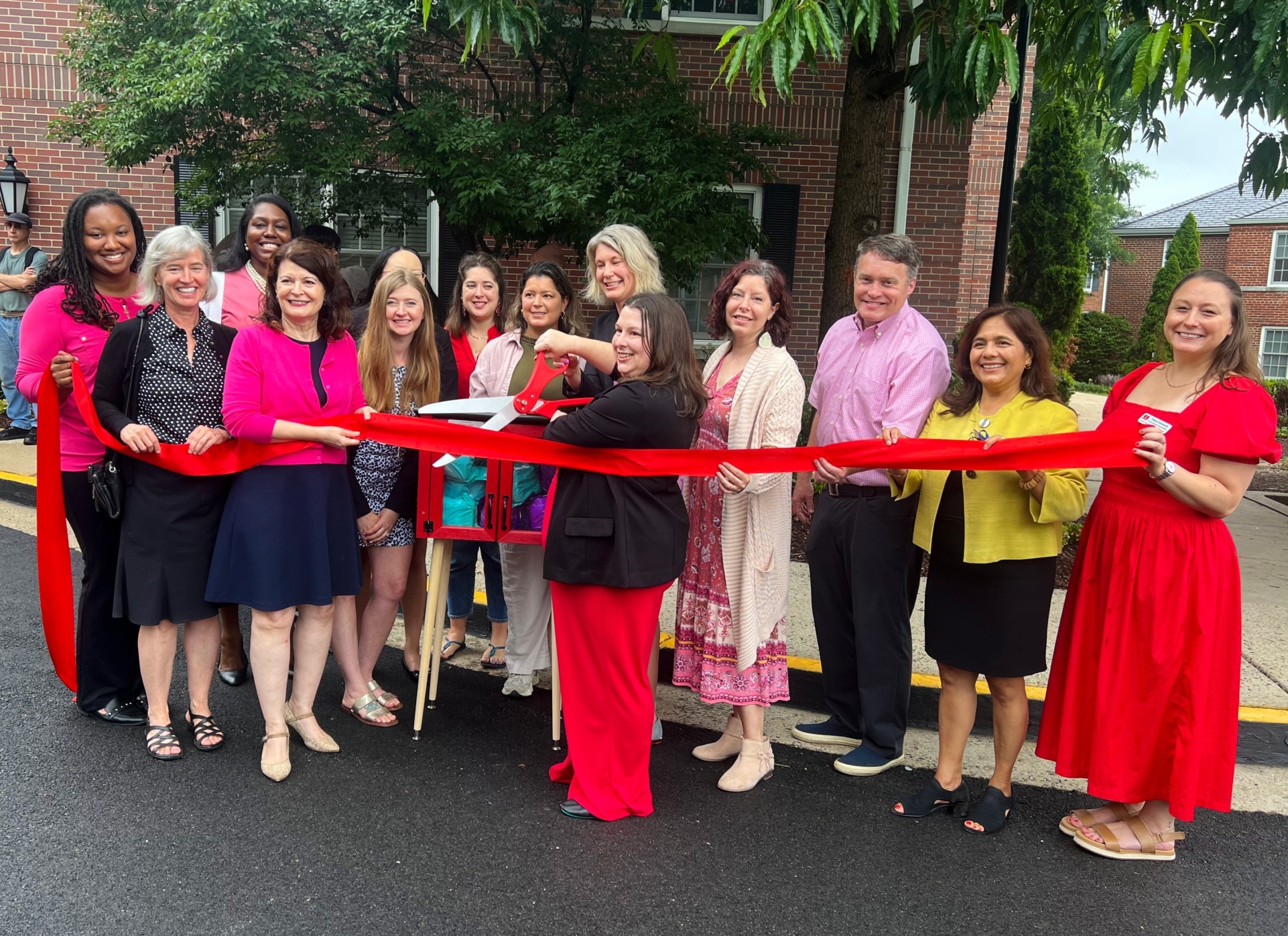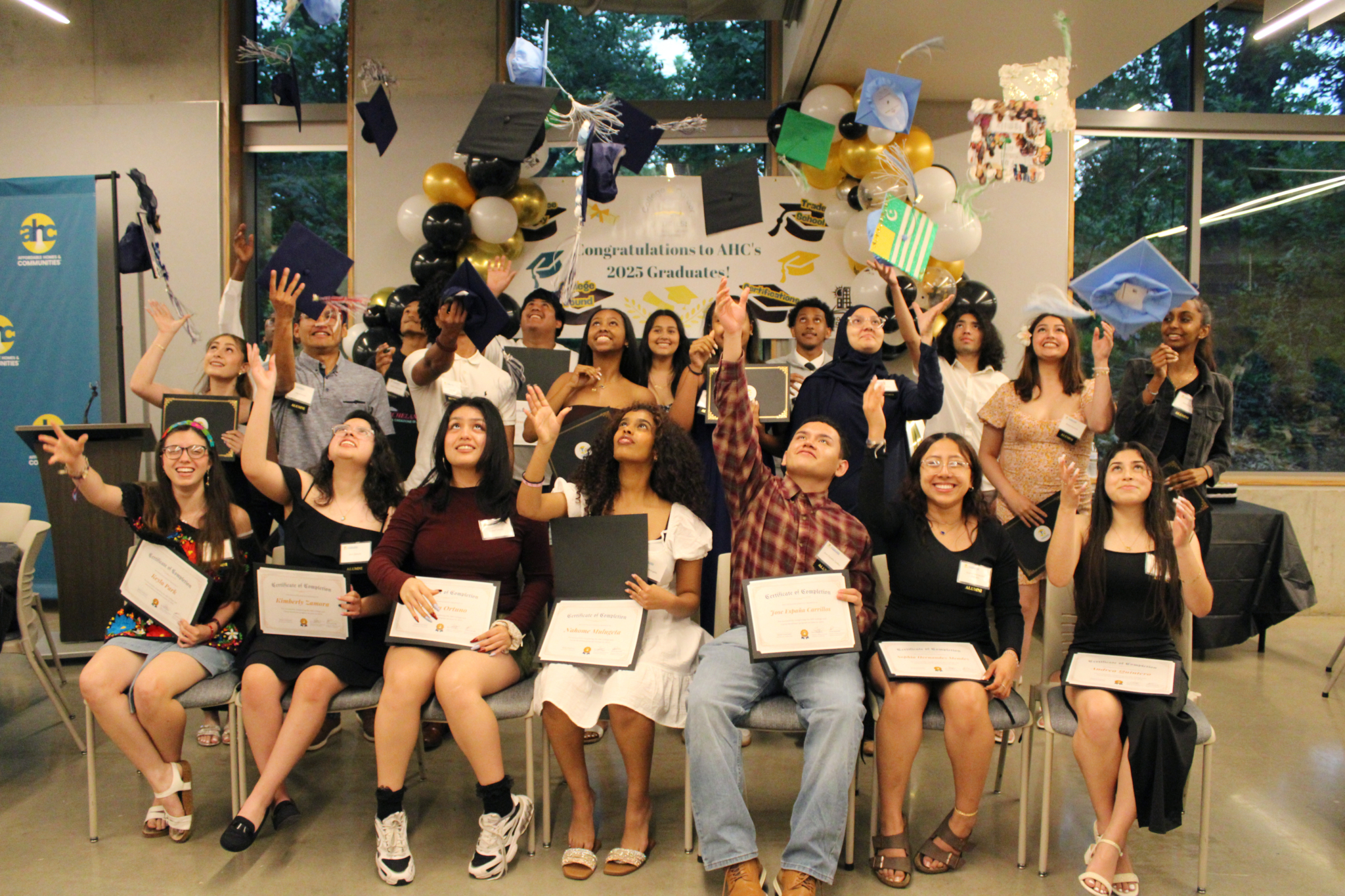On July 17, a team of Executive MBA students from Georgetown University’s McDonough School of Business in Dubai presented strategic recommendations for the future of AHC’s Resident Services.
“They partnered with us to explore how we might not only sustain Resident Services, in a landscape such as we’re living in today, but also grow Resident Services, not just as a department within AHC, but as a potential line of business or social enterprise that expands access to our services,” Susan Davidson, Vice President of Resident Services at AHC, said.
Over the past few months, students Mohamoud Adam, Eman Abdulghani Alawadhi, Reem Essa Alblooshi, David Moloto, Mo Al Obeidli, and Georgia Papadimitriou conducted in-depth research to help AHC identify new opportunities for growth and impact.
“This presentation is about how we can move beyond housing to empower life, to position Resident Services as a driver of impact, sustainability, and scale.”
– Eman, Georgetown Executive MBA student
The team proposed a hybrid business model for Resident Services that blends AHC’s internal strengths with external partnerships. The model would allow AHC to continue serving its residents while also offering services to other communities — potentially through contracts with external partners such as municipalities, developers, health systems, and corporations.
They described transitioning to a revenue-producing model, though the approach would continue to rely on external donors and funders to supplement the business income needed for sustainable operations.
“We’re trying to change [the] thinking — instead of going from a cost center, we want to be a revenue source, a way of making money… and to sustain this ecosystem that we want to create,” Mohamoud said.
The students emphasized that such a model could help AHC retain control over service quality while expanding funding sources and reach. Their proposal included a phased implementation plan, with a focus on starting small and scaling intentionally.
Paul Bernard, AHC President & CEO, thanked the team for their insight and dedication to AHC’s strategic growth.
“I am humbled that out of all the projects you could have selected, that you chose ours and you spent the time and effort to understand us, to see us, and to hear us. You affirmed what it is we’re doing, what we’re trying to do, and how big we’re trying to go with our impact,” Paul said.
AHC is energized by the ideas and exploring next steps, including potential pilot initiatives.

